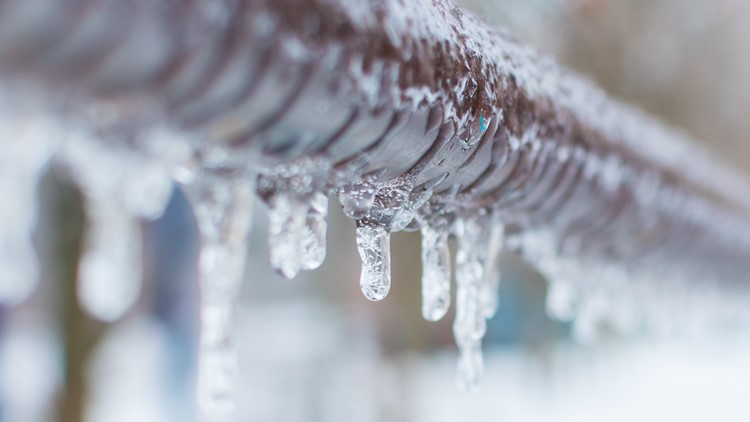Tips to Defend Your Plumbing from Freezing: Key Advice
Tips to Defend Your Plumbing from Freezing: Key Advice
Blog Article
Presented here on the next paragraphs you can discover a good deal of good resources with regards to Prevent Frozen Pipes .

Winter can wreak havoc on your plumbing, specifically by freezing pipes. Here's just how to prevent it from taking place and what to do if it does.
Intro
As temperatures drop, the danger of icy pipelines rises, possibly leading to costly repair work and water damage. Comprehending exactly how to avoid icy pipes is vital for house owners in cool environments.
Comprehending Frozen Pipes
What causes pipelines to ice up?
Pipes ice up when subjected to temperature levels listed below 32 ° F (0 ° C) for prolonged periods. As water inside the pipes ices up, it increases, taxing the pipeline wall surfaces and possibly triggering them to break.
Dangers and problems
Frozen pipelines can result in water supply disturbances, residential property damages, and pricey repairs. Ruptured pipelines can flood homes and create substantial structural damage.
Indicators of Frozen Pipeline
Recognizing frozen pipelines early can avoid them from breaking.
How to determine icy pipelines
Look for reduced water circulation from taps, uncommon smells or noises from pipes, and visible frost on subjected pipes.
Avoidance Tips
Shielding at risk pipes
Cover pipes in insulation sleeves or make use of heat tape to safeguard them from freezing temperatures. Focus on pipes in unheated or outside areas of the home.
Heating techniques
Keep indoor rooms adequately warmed, specifically locations with plumbing. Open cabinet doors to enable warm air to distribute around pipelines under sinks.
Protecting Exterior Pipes
Yard hoses and outdoor taps
Separate and drain yard hoses prior to winter season. Install frost-proof spigots or cover exterior taps with shielded caps.
What to Do If Your Pipes Freeze
Immediate activities to take
If you suspect icy pipes, keep taps open up to alleviate stress as the ice melts. Utilize a hairdryer or towels soaked in hot water to thaw pipelines gradually.
Long-Term Solutions
Architectural adjustments
Think about rerouting pipes away from exterior walls or unheated locations. Add added insulation to attic rooms, cellars, and crawl spaces.
Upgrading insulation
Invest in premium insulation for pipes, attic rooms, and wall surfaces. Correct insulation assists keep regular temperature levels and lowers the danger of icy pipes.
Verdict
Stopping icy pipelines requires positive procedures and fast reactions. By comprehending the reasons, indicators, and preventive measures, house owners can protect their plumbing throughout winter.
Helpful Tips to Prevent Frozen Pipes this Winter
UNDERSTANDING THE BASICS: WHY PIPES FREEZE AND WHY IT’S A PROBLEM
Water freezing inside pipes is common during the winter months, but understanding why pipes freeze, and the potential problems it can cause is crucial in preventing such incidents. This section will delve into the basics of why pipes freeze and the associated problems that may arise.
THE SCIENCE BEHIND FROZEN PIPES
When water reaches freezing temperatures, it undergoes a physical transformation and solidifies into ice. This expansion of water as it freezes is the primary reason pipes can burst. As the water inside the pipe freezes, it expands, creating immense pressure on the walls. If the pressure becomes too great, the pipe can crack or rupture, leading to leaks and water damage.
FACTORS THAT CONTRIBUTE TO PIPE FREEZING
Low Temperatures: Extremely cold weather, especially below freezing, increases the risk of pipes freezing. Uninsulated or Poorly Insulated Pipes: Pipes located in unheated areas, such as basements, crawl spaces, or attics, are more prone to freezing. Insufficient insulation or lack of insulation altogether exacerbates the problem. Exterior Wall Exposure: Pipes running along exterior walls are susceptible to freezing as they encounter colder temperatures outside. Lack of Heating or Temperature Regulation: Inadequate heating or inconsistent temperature control in your home can contribute to frozen pipes. PROBLEMS CAUSED BY FROZEN PIPES
- Pipe Bursting: As mentioned earlier, the expansion of water as it freezes can cause pipes to burst, resulting in significant water damage.
- Water Damage: When pipes burst, it can lead to flooding and water damage to your property, including walls, ceilings, flooring, and personal belongings.
- Structural Damage: Prolonged exposure to water from burst pipes can compromise the structural integrity of your home, leading to costly repairs.
- Mold and Mildew Growth: Excess moisture from water damage can create a favorable environment for mold and mildew growth, posing health risks to occupants.
- Disrupted Water Supply: Frozen pipes can also result in a complete or partial loss of water supply until the issue is resolved.
WHY CERTAIN PIPES ARE MORE PRONE TO FREEZING
- Location: Pipes located in unheated or poorly insulated areas, such as basements, crawl spaces, attics, or exterior walls, are at higher risk of freezing.
- Exterior Pipes: Outdoor pipes, such as those used for irrigation or exposed plumbing, are particularly vulnerable to freezing as they are directly exposed to the elements.
- Supply Lines: Pipes that carry water from the main water supply into your home, including the main water line, are critical to protect as freezing in these lines can affect your entire plumbing system.
- Underground Pipes: Pipes buried underground, such as those connected to sprinkler systems or outdoor faucets, can be susceptible to freezing if not properly insulated.
https://busybusy.com/blog/helpful-tips-to-prevent-frozen-pipes-this-winter/

Do you really like reading up on How to Prevent Your Pipes From Freezing? Create a remark directly below. We will be glad to hear your thinking about this post. We are looking forward that you visit us again before long. Appreciated our write-up? Please share it. Let someone else find it. Thanks so much for your time spent reading it.
Book Now! Report this page